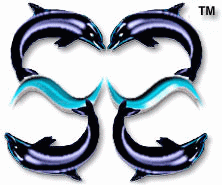Reptiles On The Rocks by William T. Blows
Chapter 6. Treasures In The Sand
Sunshine but cold winds gave us mixed feelings towards our prospects for a good day on the beach. So far on this trip we had made some interesting finds. On Saturday March 5th, 1977, I had collected several sacral vertebrae and one complete dorsal vertebrae on the beach at various points along the South Coast. But Sunday I felt I should try an area I had not visited for some time, and as we drove along the Military Road, I chose the first access point to the beach after Brook — this is Chilton Chine.
The time of year had taken its toll of cliff erosion as usual, and Chilton was no exception. Cliff falls were evident all the way along the Wealden formation, and at Chilton several steps were missing making access tricky. My colleague and I made our way along the cliff base as the tide prepared to move out. It was some time before the decreasing water revealed rockly ledges offshore, and I began to explore them eagerly. At one point several inclined sandstone ledges occur on the foreshore west of the Chine. When the last drops of water had drained from these, I studied them carefully. As I stepped onto one such ledge I stopped to look at a shape in the rock I thought I recognised. It did not take long for me to realise just what it was — a dinosaur footprint. A quick look around revealed other prints, indeed many three toed cavities lay around me on this ledge. This was real evidence of creatures walking on soft sand over 110 million years ago.
The serious work began after the initial excitement with photographsof the principal impressions, then a more detailed map of the ledge. I located a total of twenty-six prints clearly marking seven tracks and I set about the task of a sketch map. I started on the south end and worked inland, numbering, counting and measuring the tracks, building up a picture of the animals that crossed this land so very long ago. Many prints were washed out and almost destroyed, but a few were in excellent condition and showed claw holes as well as raised mud to the edges. I was amazed by track seven, the most northerly of the ledge, for these were true giants, made by a beast of formidable proportions. The measurements, notes and drawings continued until the sinking sun and bitter wind drove us reluctantly back to the car.

Dinosaur footprints occur from time to time in the Wealden formation around our coasts. At Bexhill in Sussex, several natural casts are preserved in the museum there, while others form part of the rockery in the nearby park. They were found in the sandstone strata of the cliffs along Bexhill seafront. I have been informed also, that footprints were found around the 1860's on the Isle of Wight. Indeed, occasional single prints have been noted by other collectors on the Island, but here was a set of tracks preserved in stone of seven animals, and they immediately brought to mind the fossil tracks of Iguanodon and Megalosaurus found in the older Jurassic rocks of Dorset, such as those on display in the British Museum (Natural History) in London. Prints are unlikely to be preserved in the softer clays of the Wealden period, and as this forms the majority of the strata, they are correspondingly rarer than their Jurassic counterparts. We have to wait for a suitable exposure in the harder sandstone strata before we have the chance of finding these interesting fossils. They are often accompanied by ripple marks and even rain-drop pits on occasions. However, there is a marked absence of tail impressions which suggest the tail was held clear of the ground when the animal was in motion. The majority of these printsfound in British formations are of the three toed bipedal animals, usually Iguanodon and Megalosaurus. In America, fossil footprints of quadrupeds have been found, notably the giant Sauropods like Apatosaurus (formerly Brontosaurus), but these are rare indeed. Although Sauropods did exist in Wealden times, I do not know of any record of their prints having been found in this country.
That evening, I spoke to my Island colleague, Mr. Ford, about the new discovery. He suggested that we met on Chilton beach the next day at 3 p.m., just before low tide. He would arrange for Dr. Insole to join us, since he is responsible for the co-ordination of the geological researches carried out on the Island as part of the Isle of Wight Museum programme. Whilst Mr. Ford and Dr. Insole began their work, I could complete my measurements and mapping. After my telephone call, I drew a good copy of my sketch map before retiring to bed. The next day was our last on the Island for this particular trip, and as we could do nothing during the high tide period, we went shopping in Newport. By 2 p.m. we were on our way to Chilton Chine once more, and arrived just after Dr. Insole. But Mr. Ford had beaten us both, and was already on the beach. We played a waiting game for an hour or so as the tide reluctantly withdrew. The wind and rain only served to dampen our spirits as we sat in the cars discussing the latest finds on the Island. At last we went down again to the beach and made our way out to the sandstone ledge as the water allowed us. Mr. Ford and Dr. Insole seemed pleased with this latest addition to the Island's dinosaur record, and we all began our respective work on the prints. Mr. Ford was preparing one print from track number four as a candidate for casting. Dr. Insole was photographing various prints before going off to collect his material for the next day's work. I began measuring and mapping again, checking my previous day's results and searching for new prints. Mr. Hunter, my friend with me on this trip, assisted both myself and Mr. Ford, as well as doing some photography.
During the mapping process I found remains of three more hardly recognisable due to their poor state of preservation. I had completely overlooked them on my previous day's work, and thus they remained unnumbered. Two of these tracks came between numbers four and five, and I called these 'X' and 'XX'. The third track was in fact two prints travelling north to south on the underlying layer of sandstone, and I called these tracks 'Z'. Mr. Ford's cast of one print was coming along well and when the plaster was hard it was lifted and cleaned. The result was good and it was carefully packed for the journey home. As the evening progressed, Mr. Ford left, and I was able to carry out some low light ciné filming of the area. My last job on the beach was to film the sinking sun as it disappeared below the horizon, with one very large dinosaur footprint prominent in the foreground.

My main concern was the production of an accurate map of the tracks from which some kind of analysis could be deduced from this evidence as to what was happening millions of years ago. Such a map would also prove of great value to display alongside any prints or casts that may end up in the local museum. This then I did as my first task on return to London, and copies were sent to Mr. Ford, Dr. Insole at the Sandown Museum and the Department of Palaeontology at the British Museum. The prints themselves I left in the care of Dr. Insole and Mr. Ford, who shared with me the desire to see at least some of these very precious relics preserved in the major museums, and not lost to the sea or destroyed by unskilled hands.
Perhaps the greatest joy of this kind of discovery is to look at the results of one's study and to be able to speculate as to what was happening when these tracks were produced. For here we are not dealing with petrified remains, but evidence of living creatures; walking, running and going about their daily lives. Such speculation applied to this set of tracks brings some interesting ideas to mind. Follow with me now on the map of the sandstone ledge as we turn back the pages of time to a dim and distant period.
First of all a careful study of the footprint site at Chilton Chine has shown that the sandstones were originally laid down as a sand bar in a river channel during a period of flooding. When the floodwaters subsided a number of dinosaurs crossed the area leaving the impressions of their passage. At this stage the sand must have still been wet and there may actually have been a thin film of water over the surface. The prints were then infilled with mud which also covered the surrounding area. This film of mud protected the prints from erosion when the next flood came. Sands and clays deposited by this and succeeding floods gradually buried the footprint bed. Over a period of millions of years the sand gradually hardened into the sandstone we see today, now that all the overlying rock has been stripped off to reveal the footprints once again. The preservation of the tracks is in some cases, where erosion has not damaged them too much, so good that it is difficult to believe that they were made over 110 million years ago.
Track 1 on the south side consists of two small prints, possibly a juvenile individual moving eastwards. Track 2 has three prints the same size moving westwards, 1 metre or so from track 1. Could this be the same individual, firstly going east then coming back, or the other way round? Track 3 are larger prints, six in all, travelling eastwards but turning sharply southeast as they make close approach to track 4. This track 4 consists of nine prints travelling southeast, and it is interesting to suggest that animals 3 and 4 were walking together and nearly bumped each other before animal 3 turned sharply. But let us speculate further. If the overburden was removed at this point it would be reasonable to suggest that tracks 3 and 4 cross over 1 and 2, and as a result we may find overlapping of prints; a print-in-print phenomenon, in fact.
Track X, although almost destroyed, gives evidence of some six prints, again travelling slightly south of east. Track XX was very difficult to locate, and will not be normally recognised as footprints. Two washed out cavities exist, however, that show evidence of toe marks indicating an animal travelling northwest. Track 5, on the other hand, is obvious with two prints showing an animal travelling northeast. Track 6 again travels southeast, and consists of three prints which are reasonably well preserved. At this stage it would be easy to suggest that animals 3, 4, X and 6 were part of a group crossing the area together; part of the herding instinct we see in modern elephants. Animal 5 may have been part of this group also, moving up to join animal 6. We can extend this further by studying the actual size of each print in the different tracks. These details are given as an explanation of the map. Armed with this knowledge we see that animals 4 and 6 left the same size prints, although we can see from the map that it would be difficult to suggest that these two tracks may belong to the same individual. Otherwise, the tracks all seem to be of slightly different sizes which must add some weight to our herding theory. Animal 1 could be another addition to the herd as well. Looking at these prints it is easy to forget that these are adult creatures, for we are suddenly faced with track 7, a print size that makes all the rest look like infants. It is with track 7 that my speculation runs a little dry. A truly enormous beast moved northwest leaving two clear prints close to track 6 on the sandstone ledge. However, there is one strange feature. Some 5 metres to the rear of the pair of footprints there is a solitary print on the overlying sandstone bed. Although I have located this print with track 7 because it is of the same size and on approximately the same line as the front two prints, it seems likely that its location is entirely fortuitous. Studies of the rocks show that the overlying sandstone was laid down sometime after the main footprint bed and so the third footprint must have been made at a later date.
I hope these ideas prove interesting, and perhaps you have formed some ideas of your own. It must be remembered though, that this sandstone ledge is just one piece of the jigsaw: a fragment of land surface which once covered much of what is now the Isle of Wight. Pieces of jigsaw turn up now and again and provide us with a glimpse of a prehistoric world so very remote from our own. The missing parts of the puzzle we can only fill in with factual based speculation.
So far I have said nothing of the nature of the prints themselves, and the identity of the creatures that once roamed Chilton Chine. The prints themselves vary considerably between themselves; these variations being largely due to their state of preservation and other geological factors. However, they are all generally of the same pattern (except track 7) and compare well with fossil footprints from other ages and locations. Several of the prints show clawed toes and even a rear claw (first digit) which gives the clue to their identity. The only dinosaurs with a known rear claw were the carnivorous theropods. Several people who have looked at the Chiltern prints have claimed the possibility of webbing between the toes, or at least between two toes. However convincing, this evidence is not too clear without further study. Even so, does this help in determining the nature of the genera? Iguanodon prints from the Purbeck Beds (Upper Jurassic) of Herston, Dorset, found in 1932 show no evidence of webbing between the toes. In fact, the Herston prints show a clear separation between the toes; but I can see obvious problems in that to decide between what is actual foot impression, and what is web impression is going to be a tricky business.
Another point is to decide how the creature was walking, that is toes pointing inwards or outwards. To illustrate the mode of progression, a dinosaur track found at Acton, Langton Matravers in Dorset is used by the author J. Bernard Calkin in his book 'Ancient Purbeck'. He writes: "Careful examination shows that both Iguanodon and Megalosaurus progressed by placing one hind foot in front of the other, in a kind of tight-rope fashion, their feet pointing a little to the left and right alternatively". In either case, if the toes pointed inwards or outwards, these fossil tracks suggest that the stance usually adopted for mounting skeletons, that is feet well apart, may be a little inaccurate.
And that brings us to another point, the bones of the feet. From these we can learn a great deal about the foot structure and the nature of the prints one would expect to find. From the remarkable mass of skeletal evidence available of Iguanodon we can see this creature possessed outer toes of about equal size on each foot, the centre toe being just slightly larger. The quantity of fossil evidence for Megalosaurus on the other hand is, in comparison, poor, but it does indicate one outer toe slightly smaller than the other outer toe of the same foot. This is also shown in very similar Lower Cretaceous footprints named Satapliasaurus found in the U.S.S.R. They are recognised as carnivore in origin, and indeed, Satapliasaurus tchaboukanii shows a rear claw impression. No bones of this reptile are, known, however, but these numerous Russian prints are accompanied by unknown foot impressions of very large size, nearly 50 cm. (19 ins.) long! This reminds me of our own track 7.
Another factor in distinguishing the footprints of the two genera is the question of toe angle. This angle between the outer and middle toe is thought to be greater in carnivores than herbivores. This may be so, and some footprints attributed to Megalosaurus show a wide toe angle, sometimes approaching ninety degrees. As far as size is concerned, we can rule this out, for each genus had its large adults and smaller juveniles. This also applies to weight determination by the depth of the print, for this not only shows individual variation due to age of the creature, but also variation according to the viscosity of the ground it was walking.
When laid out in tabular form, the factors look like this: Chilton Chine Tracks Sharp claw impressions...(carnivore)...........Present Rear claw impressions....(carnivore)...........Present (possibly carnivore) Present Webbing — Outer toes unequal size (carnivore) Present Wider toe angle (carnivore) PresentAs far as the smaller prints in our series are concerned, we can sum up by saying the evidence is in favour of a carnivorous dinosaur, which we can only name Megalosaurus at this present time. I would, at this point, from the details I have, like to suggest that Megalosaurus and Satapliasaurus are probably synonymous.
Now the other big question, and that is the identity of track 7. I said earlier that size is irrelevant among the smaller prints as this represents variations in age of the individuals concerned. But in track 7 size is a very relevant point because we cannot apply the same features found in tracks 1 to 6 when examining the prints of track 7. If we do we find no evidence of a rear claw, outer toes of about equal size, reduced toe angle and little evidence of webbing. There are, therefore, fundamental differences between track 7 and the other tracks on the ledge; fundamental differences which must include size. This is most unlike the prints of Megalosaurus, and judging by the lack of carnivore features, one would be tempted, if not justified, to label it Iguanodon. But hold on ... let us take another look.
Firstly, it is very big for Iguanodon (although this is not a reason for excluding this genus). I would say that these are some of the largest fossil footprints found in this country, and probably the largest from the entire Wealden strata. They exceed in size the known Iguanodon prints from elsewhere. Moreover, they do show a typical carnivore feature, and that is sharp claw impressions on the toe ends. Looking through the other carnivore footprints from other parts of the world, Antrodemus, (or Allosaurus as it used to be called) prints from the Lower Cretaceous of Texas shows equal outer toe length), no evidence of webbing and no rear claw marks. The toe angle looks about the same as in track 7, and when one considers the total body length of each animal, Antrodemus, 10 metres (35 feet), Megalosaurus, 3-6 metres (10-20 feet), it would be reasonable to expect the footprints of Antrodemus to be larger than Megalosaurus. But what of the rear claw marks? Well, with the larger beast (hence a larger foot) the first digit would still be present but carried clear of the ground, thus leaving no impression. Megalosaurus was small enough in the foot for the first digit to come in contact with the ground on occasions. The prints I have used as comparison are some of the famous Glen Rose tracks from Texas, uncovered by Roland T. Bird in 1938, and dated about 120 million years old, that is just about the same age as the prints at Chilton Chine. Have I, therefore, found the first evidence of Antrodemus in this country, the same as Mr. S. Hutt found the first evidence of Diplodocus in this country? I think the possibility is there, and I feel that track 7 is a large carnivore that we could compare favourably with Antrodemus, i.e., "c.f. Antrodemus". All we need now is for someone to start finding Antrodemus bones on the Island just to prove my point; or maybe they exist already, in some private collection, and are labelled 'Iguanodon'!
Work on the footprints continued during the next spring tides, a fortnight later. At that time some of the prints from tracks 3 and 4 were collected by Dr. Insole for Sandown Museum. In a letter to me, Dr. Insole described the operation:
After a couple of false starts lifting operations began last Saturday. I managed to hire a pavement saw and a portable generator. This proved to be very useful and all the cutting was more or less completed within an hour, the rock proving to be extremely soft. The bed on which the footprints lie was found to vary in thickness and this caused some difficulty, but I attempted to cut down to the underlying clay all round. Lifting was then commenced using wooden wedges. Immediately problems arose due to the softness of the rock but fortunately not too many fractures appeared and all were clean breaks so that the final finished product should not look too bad. On Saturday, two prints and some of the surrounding area were raised and then the tide came in and work had to be stopped. Fortunately a large number of people turned up to watch operations, so there were a lot of willing helpers to carry everything off the beach and up to the car park. Work was restarted on Sunday, and the remaining three prints which it had been decided to rescue were lifted together with surrounding areas of rock. By this time our lifting technique had improved and less breakage occurred. Once again we were blessed with a wiling band of helpers and the portering was more or less completely done by the time I left the ledge.
In all, we lifted 5 prints, 3 from track 3, and 2 from track 4. Unfortunately it proved impossible to remove the eastermost prints on both these tracks since water did not drain completely away from this area, but also and more importantly, it was found that the bed rapidly thinned in that direction and this made lifting without severe damage virtually impossible given the brittle character of the rock. No attempt has been made to lift the two large prints on track 7......
On a subsequent visit to the Island, I spoke to Dr. Insole, who showed me one of the prints now safely in the museum. He told me about plans to collect the giant track 7 before the end of 1977, and about various people who have taken casts from the tracks. I also spoke to Mr. Ford, who presented me with a cast of a print taken from track 4, and a copy of the local newspaper article dealing with the subject. Then I visited the site and found the results of the work. Apart from those prints taken from 3 and 4, track 5 had been removed by erosion. Tracks 1 and 2 remained, but their condition was poor, also due to erosion. At the time of my visit track 7 was still there but in September, 1977, Dr. Insole managed to extract one print from this track. This print, on a block of sandstone weighing about a quarter of a tonne, is now in Sandown Museum.








 Help To Support Us
Help To Support Us





 Our Facebook page
Our Facebook page Get the latest Tweets
Get the latest Tweets You Tube
You Tube RSS Feed
RSS Feed
